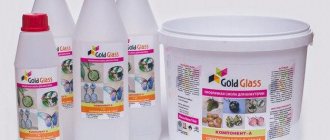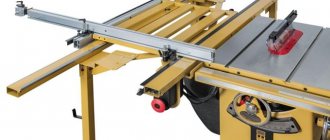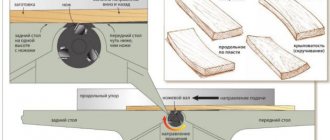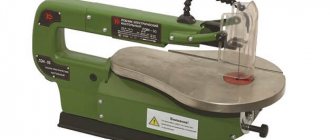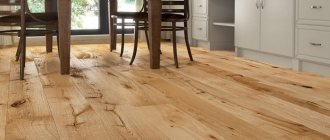Structural design options
More often, epoxy resin tables are made for kitchens and living rooms. Using resin, they create new, unique furniture or restore old or damaged ones. You can create a table from resin alone, or combine resin with wood or metal. There are no special restrictions on the shape and dimensions of epoxy tables. What is important here is creativity and the desire to create an exclusive piece of furniture.
Epoxy resin does not lose its shape after it hardens. When working with it, there is no need to exclude various decorative elements. These are important features of resin as a material for independent creativity.
How to Renovate an Old Table Using Resin
The finished epoxy table will delight the owners for many years. But in life anything is possible, and sometimes due to the negative impact of factors, epoxy tables have to be renewed. And when you use your imagination, make it a new exclusive design element by adding photos, various beads, rhinestones, coins, etc. to the decor. The work itself consists of the following steps:
- Cleaning up areas that were decided to be restored. Remains of paint and other coatings are removed, these areas are sanded and degreased.
- Layout of additional decorative elements. If they are too light, then first glue them to the surface so that they do not float in the resin layer.
- Preparing epoxy and pouring it. It is better to apply the resin in several layers, taking a break of 2-3 days.
- Final polishing of hardened new areas.
Types of table designs
Support tables
At the finished table, only the upper part of the tabletop is poured. Various elements are used in decoration: branches, leaves, stones. You can fill in whatever you want at the discretion of the master.
Supportless tables
These are monolithic tables made of epoxy resin. Mostly small coffee tables. Monolithic filling does not withstand heavy loads.
From combined materials
This design uses resin in combination with wood. Old wood is often used. Old furniture is also often restored using this method.
Materials
Having prepared a list of necessary materials, I went to a construction supermarket and a lumber warehouse. The shopping list looks like this:
- two longitudinal cuts each measuring 40 x 4 x 200 cm. Total area 1.6 m2;
- steel corner 40 x 40 x 6000 mm – 2 pcs.;
- glass 40 x 1 x 200 cm – 1 pc.;
- tint film for glass 40 x 200 cm;
- screws 40 mm – 20 pcs.;
- metal paint – 1 can;
- furniture varnish PF 170 – 0.5 l;
- emery grinding wheels – 4 pcs.;
- BF 2 glue in a tube – 1 pc.;
- metal cutting circle – 1 pc.;
- electrodes for welding – 6 pcs.;
I placed all the tools and materials in the workshop. I have previously compiled instructions for assembling a table from sawn wood with my own hands.
Modifications
When creating a table from epoxy resin, it is important to decide on the modification. When working, you don’t need to limit yourself to just the topic of epoxy resin and wood. You can add elements of stones, leaves, beads, sand, and various dyes. With the help of these additions, landscape elements are created: islands, rocks, rock shoals, beaches. Here are some popular modifications:
River
The river table is 2 pieces of wood with epoxy resin poured in the middle. What the table will look like depends on the selected pieces of wood and the imagination of the craftsman. The shape of the tabletop does not matter. In this modification, the tree plays the role of banks, and the resin plays the role of river water. To give the resin a blue or blue color, color is added. This option is suitable for coffee tables and office tables. To make a table with dimensions of 210x15x5 centimeters, you will need up to 14 kilograms of epoxy composition.
The step by step process is very simple:
- First you need to prepare the tree. It must be hard wood: elm or oak. Clean the selected pieces of wood from rot, protruding knots and bark. It can be sanded either to an absolutely equal surface or with a slightly protruding relief. Afterwards the pieces should be left to dry.
- It is necessary to prepare the form for filling. The sides and bottom of the mold must have sealed corners and joints. The walls of the form must be even in height and on the inside. The material must be absolutely smooth and clean.
- Place the finished mold on a flat surface. Place pieces of wood into the mold. Since the model should imitate a river, you need to leave a gap between the 2 pieces. The width is selected based on the intended plot.
- Next is the preparation of the epoxy composition. It should be liquid to fill all the uneven spots. If decorative elements are added to the composition, it is better to glue them in advance. In a liquid composition they may float. Add blue color to the liquid solution. Choose the depth and brightness of the color during the mixing process.
- Slowly pour the prepared mass into the mold with wood. The resin should cover the top of the workpiece. The thickness of the resin should be more than 3 centimeters. Cover the filled form with cellophane and leave to harden.
- While the tabletop hardens, you need to make legs or a base. You can weld it from metal, make it from wood, or use a ready-made structure from an old table.
- After hardening, release the tabletop from the mold and sand it.
- Attach the tabletop to the base using bolts or transparent silicone.
Solid table
To make such a table, no support is used. To fill, you will need the shape of the tabletop and legs. The table shape can be any. The result will be a glass table. Most often magazine or toilet. Such tables should not be subjected to heavy loads. To make a table measuring 100x60x5 centimeters you will need up to 30 kilograms of epoxy resin.
Manufacturing technology:
- The manufacturing technology is almost the same as described above. The differences are that there is no need to make a base of metal or wood.
- You need to make two forms. One under the base and the other under the tabletop. Or fill it all up.
- Before pouring, place decorative elements inside the forms.
- After hardening, the workpiece must be sanded.
Slab
Slabs are solid stone or wood slabs. This material should be extremely light. When making a table from epoxy resin with your own hands, you use a cut of a single piece of wood. At the same time, a large number of irregularities and knots is only a plus for the future masterpiece. Oak is well suited for production. In order for the tabletop to be durable, the required thickness of the material should not be less than 5 centimeters. Epoxy resin is used to fill the irregularities of a longitudinally sawn piece of wood. To make a table of medium size, you will need up to 10 kilograms of resin.
The manufacturing technology is the same as in the first described embodiment. The main feature is the slab itself. It must be made from a single piece of wood. Well polished. All other actions are the same as in the first option.
From wood cuts
Using this technology, very unique tables are obtained. Saw cuts of different diameters are used. You can fill either a finished tabletop or a monolithic form. Round cuts of branches and trunks are laid out on the finished tabletop. To give a greater effect, use the trunks of different trees. Next, the resulting “ornament” is filled with resin. For a medium-sized table you will need 7 kilograms of resin. Often such tables are made for the kitchen, garden or veranda.
The most labor-intensive manufacturing method. But also the widest for creativity. The main feature of this method is the possibility of restoring an old table.
- Take an old table or a new one. There is not much difference here.
- We cover the edges of its tabletop with slats, creating a shape. First, clean and sand the countertop well.
- We lay tree cuts on the bottom of the tabletop mold. We choose interesting ones, with beautiful patterns, different in shape. You can put starfish, shells, stones and much more on the bottom. The main thing is to create a beautiful, unique plot.
- Fill the resulting blank with epoxy resin. After pouring, warm up the entire mass with a hairdryer. This will help get rid of air bubbles. Cover the tabletop with cellophane until completely dry.
Table base
To make a table with a support, 2 types of bases are used:
- A wooden base is often used to add a special style. Such bases are environmentally friendly, easy to process and very stable. Oak, beech or larch are often used in such structures. Often you can take a ready-made wooden table or its legs as the base.
- Metal supports. They can be made in a workshop by welding. No need to paint or sand. Almost any thing can be used as a basis, and the older and more vintage, the better. The main advantage is strength and stability. The main materials are: steel, aluminum and cast iron. The form chosen is different. There may be ready-made or homemade legs, frames or stands. You can choose ready-made designs: an old tricycle, a car engine, rims.
Tips for use
Epoxy resin is extremely easy to use, so there are no special instructions for use. However, when caring for her, it is unacceptable to use aggressive substances such as acetone and alcohol. Also, it will not “stand up” to thermal influences. Rubbing such a countertop with brushes or using abrasives is also not recommended.
Thus, epoxy resin is a common material that is loved by users for its original appearance, variety of variations and ease of maintenance.
Technological nuances
In order to make your own table from epoxy resin, you must follow all the nuances:
- The resin must be of the best quality. The brand CHS Epoxy 520 is very suitable. Lower quality resin quickly turns yellow and becomes cloudy.
- Mix the resin and hardener mixture according to the instructions.
- The liquid composition is good for filling all the unevenness.
- The semi-liquid composition is excellent for filling round tables and creating decorative elements.
- The thick composition is used to create jewelry and restore oak furniture.
- With a mold thickness of 1 millimeter, the resin consumption is 1 liter 100 grams per square meter of area.
- Avoid exposing the curing material to direct sunlight.
- Remove any air bubbles that have formed using hot air or by piercing with a needle.
- Cover the curing product with polyethylene. This will prevent dust and foreign objects from entering.
- When adding paints and colors, the composition must be heated to 30 degrees.
- The wood must be thoroughly cleaned and polished before pouring.
- It is not allowed to polish hardened resin with coarse abrasive materials.
Do not forget that epoxy resin is a toxic composition. You need to work with it in protective clothing and a respirator.
What do we offer?
- Slabs and cuts from solid wood
- Epoxy resin with dyes for woodworking
As well as many other products for woodworking and making wood products. For example, special adhesives, oils and impregnations for wood and much more.
Do you have any questions about the products presented? Call or leave a request on the website. We will contact you shortly.
We work with furniture and construction companies, designers, carpentry workshops, and individuals. We provide delivery of goods to addresses in Chelyabinsk and the region, as well as to neighboring regions. We guarantee the high quality of the products presented.

